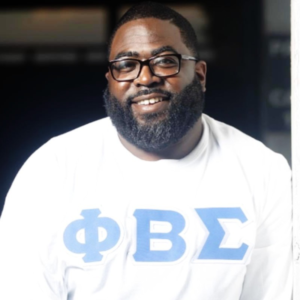How AI Transforms Creativity
We humans are born creators and if we play our cards right, we’ll get to nurture and refine these abilities as we go along. Many times, there is a rush of a brilliant idea clicking into our brains. But for some in the creative industries, the advent of AI has seemed like a dark cloud on the horizon. There is a fear that AI will move us out of our creative zones and take over our jobs. What if I tell you that AI could just be your thinking assistant that not only speeds up your workflow but also elevates it, making you more creative than ever before? That would be great, wouldn’t it?
In an era dominated by rapid technological advancements, the integration of Artificial Intelligence (AI) into various aspects of our lives has become inevitable. While AI is often associated with automation and efficiency, its role in fostering creativity is gaining recognition. Contrary to the fear of machines replacing human creativity, AI is emerging as a powerful tool that can boost and inspire our imaginative capacities.
The Transformative Potential Of AI In Creativity
1. AI As A Catalyst For Idea Generation
One of the primary ways AI contributes to creativity is by serving as a catalyst for idea generation. AI algorithms can analyze vast datasets, identifying patterns and correlations that might escape the human eye. For writers, artists, and innovators, this means an endless source of inspiration. Tools such as OpenAI's GPT-3 generate coherent and contextually relevant text, offering unique prompts and starting points for creative projects.
Consider a scenario where a writer is grappling with a blank page wondering how to get started. AI-powered writing assistants can suggest alternative phrases, offer diverse perspectives, or even provide creative snippets to kickstart the creative process. This collaboration between human intuition and AI-generated ideas can give birth to novel ideas and imaginative breakthroughs.
2. AI For Enhancing Creative Collaboration
Imagine a team of graphic designers working on a project. AI algorithms can analyze the designers' previous works, understand their preferences, and suggest design elements that align with their individual styles. This dynamic collaboration results in a fusion of human creativity and AI-driven insights, producing designs that are both innovative and tailored to the creators' unique strengths.
3. AI-Powered Personalization For Creative Individuals
AI excels at personalization, tailoring experiences based on individual preferences. In the realm of creativity, this means that AI can cater to the specific needs and tastes of individual artists, writers, musicians, and creators. Personalized content recommendations, style suggestions, and targeted inspiration can significantly enhance the creative journey.
For instance, an aspiring musician can benefit from AI algorithms that analyze their musical preferences and suggest chord progressions and instrument choices, or even recommend collaborators with complementary styles. This personalized approach not only streamlines the creative process but also encourages creators to explore new horizons within their preferred genres.
4. AI-Powered Learning Platforms: A Gateway To Knowledge
Continuous learning is fundamental to creativity. AI-powered learning platforms leverage Machine Learning algorithms to understand individual learning patterns, adapt content delivery, and offer personalized recommendations. This ensures that creators are exposed to a curated selection of knowledge that aligns with their interests and goals.
Consider an artist who wishes to delve into a new artistic style. AI-powered learning platforms can recommend tutorials, provide historical context, and even suggest artists with similar styles. This not only accelerates the learning process but also enriches the creative journey with a deeper understanding of the chosen art form.
Ethical Considerations And The Human Touch
While the integration of AI into the creative process is promising, it raises ethical considerations. The fear of machines replacing human creativity is a valid concern. However, it is essential to view AI as a complementary tool rather than a replacement. The real magic happens when human intuition, emotions, and consciousness collaborate with AI's analytical prowess.
Creators should maintain an ethical balance, acknowledging the limitations of AI and ensuring that the human touch remains central to the creative process. The fusion of AI-driven insights with human interpretation results in a symphony of creativity that transcends what either can achieve in isolation.
The Future Of AI-Enhanced Creativity
As AI continues to evolve, its role in enhancing creativity is likely to expand. From Virtual Reality simulations that immerse creators into a fantasy world to AI-generated music and voices, the possibilities are boundless. The key lies in embracing AI as a creative partner, a source of inspiration, and a tool that amplifies human ingenuity.
Conclusion
In conclusion, AI has emerged as a transformative force in the realm of creativity. By augmenting idea generation, facilitating collaborative environments, personalizing creative experiences, overcoming blocks, and enhancing learning journeys, AI is reshaping how we approach and cultivate creativity. As we navigate this relationship between human creativity and Artificial Intelligence, the future promises a tapestry of innovation woven by the collective efforts of both creators and machines.









